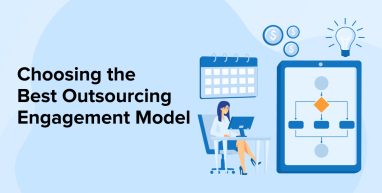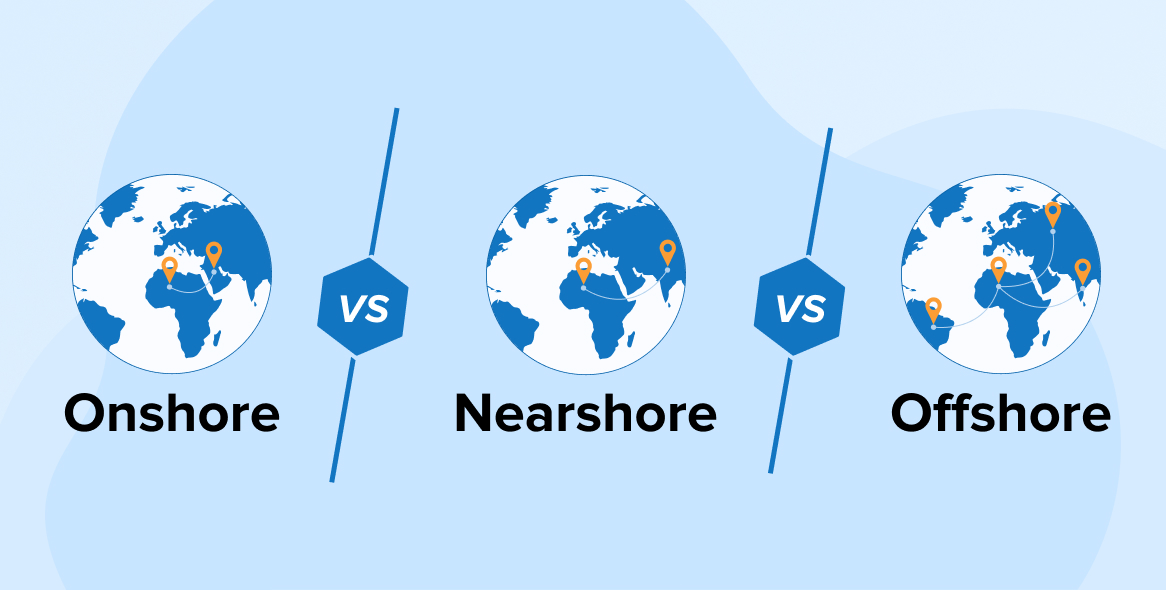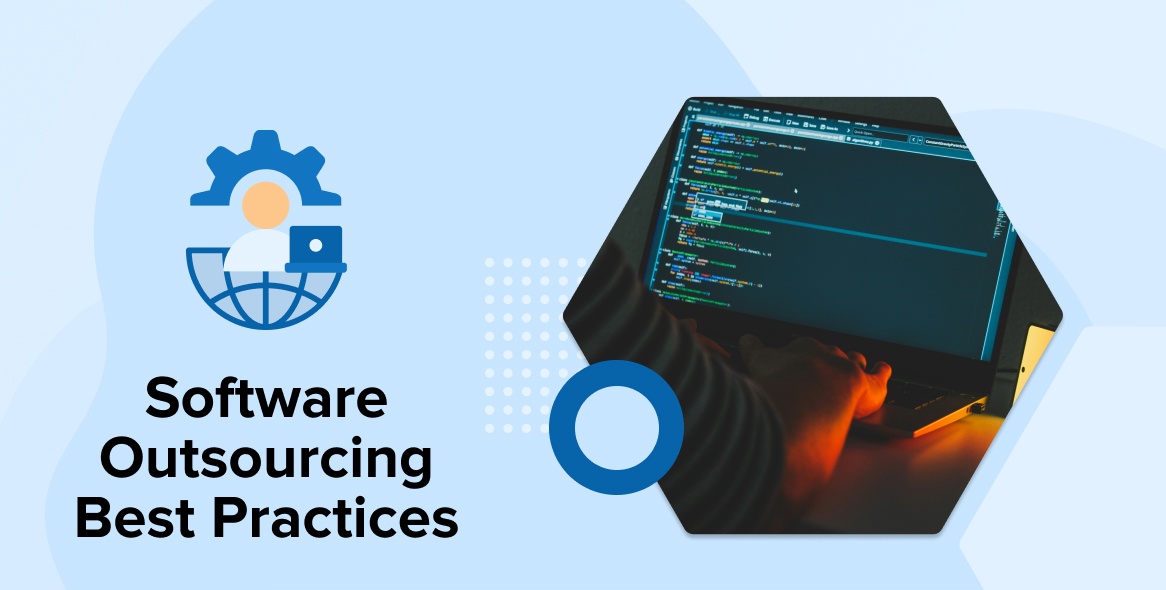
Going digital is no new norm, it is the need of an hour for growing business. Every eighth business is in a constant attempt to transform its paper-based mundane processes into automatic software-based tasks. Since modern progressive businesses want everything at the tick of the clock to improve turnaround time, and reduce manpower but not everyone can successfully execute multitasking. So these business scenarios demand software development services outsourcing.
If a question arises, what exactly is Software outsourcing for a business? And you are under the impression that outsourcing is just application testing, product development, or building a custom-made application but it is not so. To exemplify, Software Outsourcing doesn’t just include these small software tasks. It is a wider concept. Outsourcing software development is a process of engaging third-party expertise, and establishing secure and trustworthy communication for Software development activities with companies located either locally or internationally.
1. Types of Financial Engagement Models for Software Outsourcing
Overcome development limitations such as delays in delivery, mission-critical bugs, hindering growth, and slow digital transformation- leads businesses to outsource resources, development services, and software solutions. Depending on their needs, businesses can choose any type of outsourcing engagement model that best suits their project requirements. However, there are some reliable tech-leading software development companies that have discovered some fixed ways of engagement. Based on financial aspects and suitable conditions, businesses have divided the engagement models into three types:
- Dedicated Team Model
- Fixed Price Model
- Time & Materials Model
In the upcoming segment, we will be discussing the forms of outsourcing contracts that are used for one-time engagements, where one way or another will decide the outcome of the project. Here is a brief overview of the most popular models.
1.1 Dedicated Development Team
This is the most trusted type of financial engagement model for businesses to collaborate in the software development outsourcing industry. Owing to its flexibility and convenience, most businesses choose this method to partner with software outsourcing vendors for their medium and/or large-scale tasks of varying sizes. Businesses with dedicated requirements use this method for their software development projects. There are perks of using this method and certain snags too which we will be discussing in the later section. Dedicated Teams are good for long-term and continuous projects.
This approach is indispensable as there are experts involved who timely solve unexpected complications, overcoming all the potential project challenges. The client gets full control over the selection of candidates and the project management of dedicated team members. Choosing this model for application development Software outsourcing destinations like India is considered a good option.
1.1.1 Pros of Using a Dedicated Development Team
- Hired to Align with Business goals: Usually, this method of collaboration is used to quickly get the work done by screening the right set of resources for the business. Project planning is the foundation for any business success and so a dedicated development team is hired to align business needs with projected goals.
- Relevant Expertise and Experience: The hiring of these dedicated development teams is done with extreme scrutiny and hence the experience and expertise of team members are never questioned. These teams look after every minute detail and can advise you if you have missed any important aspects.
- Result-driven Approach: The only aim to hire a dedicated team for software outsourcing projects and services is to achieve targeted goals. This result-driven approach enables complete visibility of regular task updates which allow a business to make the right decision and avoid conflicts.
1.1.2 Cons of Using a Dedicated Development Team
- High Cost: For smaller projects, if you have hired a dedicated development team then it can be a costly expense as the efforts will be higher. This type of engagement model suits more for larger projects and enterprise businesses.
- No one size fits all: If your competitor business has hired a dedicated development team and you blindly go and hire the same team then the results may not be the same. Dedicated development teams are hired as per custom business requirements and they show results accordingly.
- Communication Barriers: Communication can be the biggest roadblock if the business has not partnered with the right set of developers from a software outsourcing company. Also, if periodic updates are not taken then there can be a loss in monetary aspect at the end of the project if the expectations haven’t met the reality.
1.1.3 When to Choose Dedicated Development Team Model
- When your business’s in-house expertise does not suffice and your business needs extra manpower support from external sources, at that moment you can use a Dedicated development team.
- In case your business is the underdevelopment of some technology innovation that needs the support of a global talent force then this model can be helpful.
- When your business wants to have an upper hand on technology and to ingest their skills in your services.
1.2 Fixed Priced Model
In the Software Outsourcing industry, the Fixed price model goes as per the name which includes fixing the project needs, scope, deadlines, and cost- all at scratch. If you have a plan for your business then this method can work like a miracle because a fixed price time model works on the fundamentals of initial planning, estimation, and analysis. The main benefit of this pricing model is that you know the exact amount you can invest in your software development outsourcing.

1.2.1 Pros of Using a Fixed Price Model
- Overall Transparency: This method works on plans and schedules and there are timely updates to the milestones achieved during the software development process. It is very transparent and engaging which keeps users glued to their goals.
- Faster Business Outcomes: In the Fixed price model, every step is planned and businesses work according to the scheduled plan. Hence, every step is inlined and every business outcome is Faster and easily predictable.
- Easily Manageable business processes: With minimum supervision required by clients on their ongoing software product, the management of the client’s company has complete liberty to focus on other vital activities rather than monitoring and giving feedback on developed software.
1.2.2 Cons of Using a Fixed Price Model
- Does not Allow Adjustments: The fixed-priced model ensures everything is fixed at the beginning itself and so it works as per the plan. So, in case anything comes out of the plan, this model has to leave the current plan and focus on the emergency requirements which spoils the upcoming deadlines and deliveries.
- Extra work cost an extra penny: With the advent of newer technologies, if the businesses have some additional requirements to be added to the list then they have to pay extra for all the extra work which is not included in the model.
- Delayed Launch time: If something goes off track then businesses have to make adjustments for other tasks in their schedule and hence this might delay most of their regular plans which will holistically delay the overall launch time.
1.2.3 When to Choose Fixed Price Model
- Businesses with smaller projects that come with limitations should consider using a fixed price model.
- If your business has clear objectives of which type of application is to be built but has budget constraints can also use this method.
- With focused objectives, your business might expect faster results and the Fixed price model ensures faster business results.
1.3 Time & Material Model
This model does not require any added clarification or explanation on what Time and Material model is. It simply goes as per the name- The time and material outsourcing model is simple where businesses just have to pay as per the time invested and material utilized in the development process. Speaking specifically of the software development outsourcing industry, this is one of the oldest and most conventional methods used to create and launch software products. This type of model allows you to pay per month as per the usage of materials and time invested. It fits full process outsourcing responding to time changes.

1.3.1 Pros of Using a Time and Material Model
- Rapid Adaptability: Owing to dynamic business changes, every business has to be adaptive and implement changes faster. By using this “Time and Material model”, businesses can implement changes quickly with the closest iteration in the next project cycle. Also, the materials (technology stack, tools, etc) can be changed as per the changing technology.
- Staying up-to-date with Technology: When you execute this model, all the alterations are periodically addressed which means now there is a higher possibility to withstand technology changes easily and effectively. Now enhancing changes in your product and services will keep your business modernized with technology.
- Faster Time-to-market: The “Time and Material” model follows a continuous change method wherein bugs are caught in early stages and cost is thoroughly estimated to meet the final business goal. Also, multiple products are halfway and ready for launch because the T & M method gave a boost to its time-to-market.
1.3.2 Cons of Using a Time and Material Model
- Uncertainty in Time and budget constraints: The Time & Material model has more focus on time and hence your development needs get deviated. The overall cost may not fit in your budget so businesses choose this model so that they can pause the services whenever they feel content with the achievement.
- Lesser Possibility of Contract Extension: This method is usually chosen on an hourly, weekly, or monthly basis, and hence once the target is achieved, no business sticks to the same method for a longer time.
1.3.3 When to Choose Time and Material Model
- Businesses that need and require changes quite frequently are dynamic.
- T & M model suits best when your business has short-term business objectives like a small project or an app.
- If your business has budget constraints then T & M is the best fit.
2. Conclusion
The idea of creating this blog was to shed light on the ways businesses can engage or collaborate with other businesses as per the financial models. And we hope to cover all the aspects of the types with a detailed analysis of how each one contributes to unique businesses. As you can see in all these models cost plays a major role in the benefit of software outsourcing. We have also curated the advantages and disadvantages and the suitability of each model for specific types of businesses. Now that the ball is in your court, make a wise choice while engaging with other businesses in the Software outsourcing industry.






This article discusses a very important topic. If you want to take complete advantage of software outsourcing then must choose a perfect outsourcing engagement model. This article discusses some of the most effective and efficient outsourcing engagement models based on your requirement. Article lists out models based on their pros and cons.
This article provides a comprehensive overview of different financial engagement models for software outsourcing. It highlights the advantages and disadvantages of each model and discusses the suitability of these models for different types of companies.